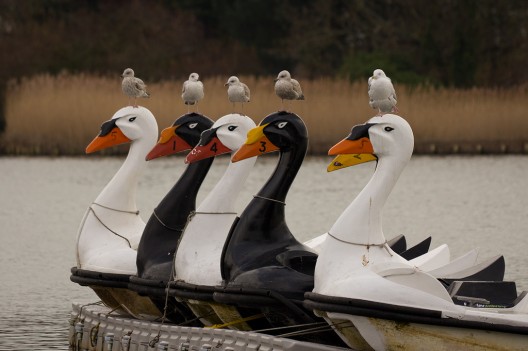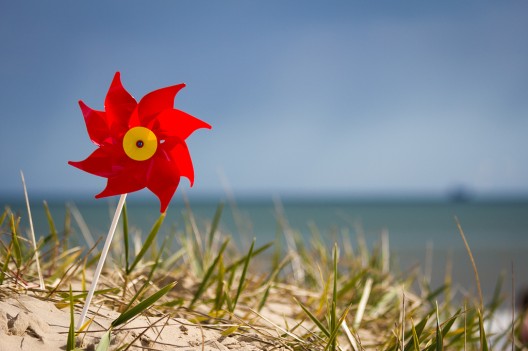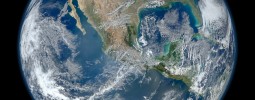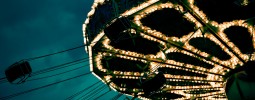Just a very quick post to share a photo I took while driving home this afternoon.
I spotted these seagulls resting on the heads of some floating swan rides and immediately had to stop the car to get the shot. A random passer by looked at me with my camera and then looked out to where my lens was pointing and remarked “That’s really funny, I just wish I’d brought my camera out today”.
So it just goes to show that it’s always worth having a camera handy if possible to capture those quirky unexpected moments.
Have a great weekend!
Related Posts:

I was recently reading the fascinating story of Vivian Maier (1926-2009) and wanted to take a moment talk about her here.
Vivian Maier’s photography has only recently come to light following her death in 2009. Details are still scarce but it is know that Vivian Maier worked as a nanny in Chicago for approximately 40 years starting in the 1950s. She was by all accounts a very private individual who would spent much of her free time exploring the streets of Chicago taking photos with her Rolleiflex camera, which she subsequently never showed to anybody. Oh and it also turns out that she may well have been one of the finest street photographers of the 20 century.
Vivian Maier’s work was discovered at an auction house in Chicago shortly before her death. It is believed that she fell upon hard times later in life and may have actually been homeless for a period of time. It is understod that the photographs and film were recovered from a storage locker when she had failed to maintain the rental fees and were subsequently sold at auction.
The photos were bought by John Maloof in 2007 and consisted of 100’000 medium format negatives, thousands of prints and undeveloped rolls of film. There is some debate and interest regarding the circumstances surrounding the discovery and emergence of the work shortly after her death and I’m sure that this will continue for the foreseeable future but what is clear however is that her work is striking and since being made available to the public in 2008/2009 has received critical acclaim.
Vivian Maier’s work consists predominantly of black and white street scenes of Chicago taken during the 1950s and 1960s, often depicting the less privileged individuals of the era. I easily managed to spend a couple of hours looking at her work on John Maloof’s blog dedicated to Vivian’s work. The shots are absolutely fascinating, even more so because they are from a period in time that I have did not experience, these shots really give you a feel for and an insight into what life must have been like for some of these people.
I find it incredible that such a large body of work was possibly never shown to anybody and also sad that this collection may now potentially be worth a fortune but the artist herself may have died without any recognition and very possibly without a penny to her name.
Some examples of Vivian Maier’s work
All photographs taken by Vivian Maier, taken from http://vivianmaier.blogspot.com. Copyright of Maloof Collection
Vivian Maier’s work can be seen on John Maloof’s blog and the exciting thing is that there is still plenty more to come in the future as more negatives are developed and uploaded.
http://vivianmaier.blogspot.com/
There was also an interesting article regarding Vivian Maier on the BBC News site:
http://www.bbc.co.uk/news/world-us-canada-12247395
Take a look at the official blog and let me know what you think about the work.
Related Posts:
I’m a huge fan of Flickr and something I’ve noticed more and more recently when viewing users work is the adoption of HDR photography techniques.
For the uninitiated, HDR stands for high dynamic range and essentially enables a photographer to produce an image with a far greater range of luminance than would otherwise be possible. That is to say an image with far more detail in both the dark and light areas by combining three (or more) exposures of the same scene together and then tone mapping them to produce the best result.
HDR is popular is because the sensor in a digital camera is unable to capture the full dynamic range of a scene that can be perceived by the human eye. By using HDR photography it is possible to address this issue and produce a photograph that more accurately represents that scene that the photographer witnessed and avoid losing detail in the darkest or lightest parts of the scene.
Any camera that allows over or under exposure of a photo can be used to create a HDR image and many cameras now come with auto exposure bracketing which allows all of the shots required for the HDR to be created automatically. This technique is even available on the iPhone now.
Some example HDR images
The HDR examples above are from Trey Ratcliff’s stuckincustoms.com. Trey is probably the most well-known HDR photographer around and you should take a look at his site to see more examples of his work and information regarding HDR photography.
So HDR photography sounds great, right? Especially if the end result is images that more accurately represent the scene? Well I have mixed feelings about HDR photography and I’ll explain why below.
I have played with HDR photographs in the past with varying degrees of success and I believe that HDR photography is a great idea and certainly has its benefits. As photographers it enables us to produce more accurate results, bringing life to an otherwise flat photo and potentially producing a more pleasing result. But as they say, with great power comes great responsibility and unfortunately HDR is very easily abused. The problem I have with it is that people often take it to the extreme, tone mapped images have become very prevalent, you only need to perform a quick search Flickr for HDR to see examples of vastly oversaturated images that literally hurt your eyes to look at and to me at least look more like abstract paintings than photographs. This is not so much a problem with the HDR technique as it is with the application of the technique. Photographers are sometimes guilty of using HDR with otherwise unremarkable shots in an attempt to add interest artificially.
I guess this ultimately boils down to a question of judgement and artistry and while I can certainly see why HDR images appeal to people, I personally find many of them rather difficult to appreciate. I’m sure as photographers we have all bumped the saturation of an image up or down to produce a more pleasing result and I don’t have a problem with this. I guess there are different schools of thought when it comes to post processing and I firmly believe that post processing is absolutely fine and the important thing is that the photo has a pleasing end result rather always recording the scene exactly as it was. However when the end result is not pleasing and images all begin to look alike is when I have a problem with it. Unfortunately much of the HDR photography I have seen recently has the over-processed/artificial look.
I do believe that HDR has its place in a photographers repertoire, it’s something we should know about and understand but I can’t help but feel that subtlety is key and for a HDR image to be truly effective the viewer should perhaps not even realise they are looking at a HDR image.
I’m sure that this kind of question will divide opinion and of course there is no definitive answer, it is a subjective thing after all as with other art forms. But I’m interested to know what you think, is HDR photography hot or not?
Related Posts:
I have been fascinated by photography for as long as I can remember.
I find myself consumed by thoughts of photography and while not taking shots I’m spending time reading about photography, looking at the work of others and listening to as many photography podcasts as I can find. I seem unable to walk past a store without picking up a new photography magazine or book and of course I’m always looking for new a photo blog to digest.
The things that appeal most to me about photography is that there is always something new to learn, something that you may previously have never considered and inspiration is absolutely everywhere. Photography helps you to see the world a little differently, as a photographer you notice things that others don’t and find beauty in some of the most unlikely places.
Photography has the potential to be both highly technical and highly creative and creating a personal photography blog seems to be the most natural place to converse with likeminded people, share some of my own photography and write about my thoughts on the ever evolving world of photography.
Find me on Twitter & Flickr and feel free to leave a comment.
































